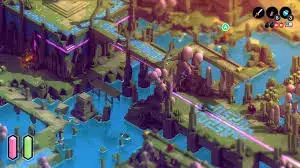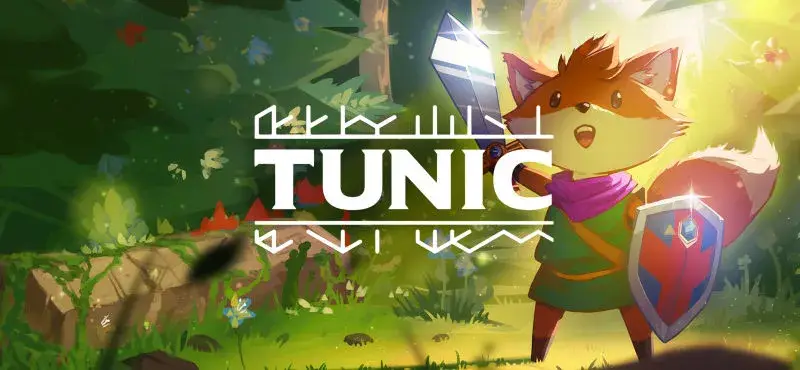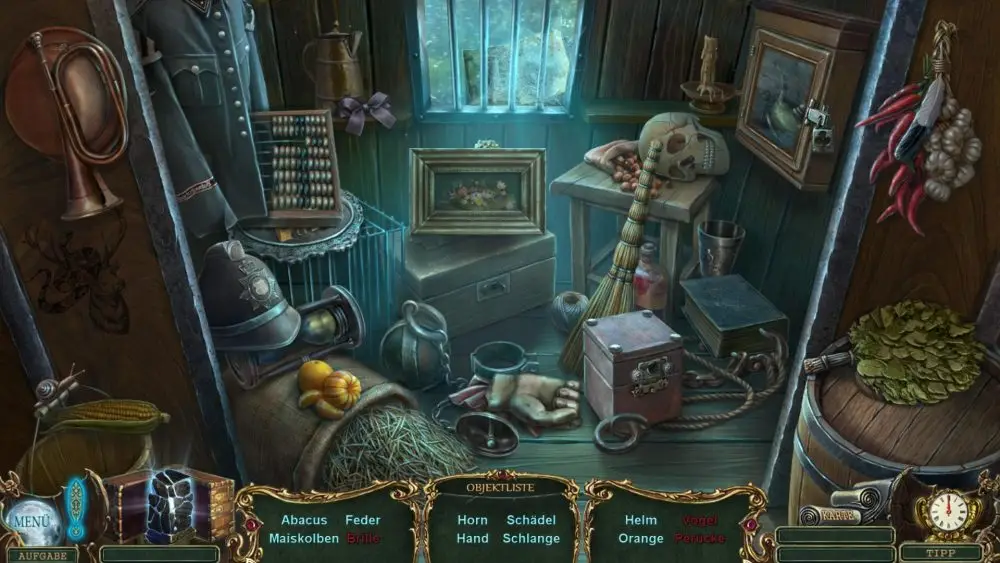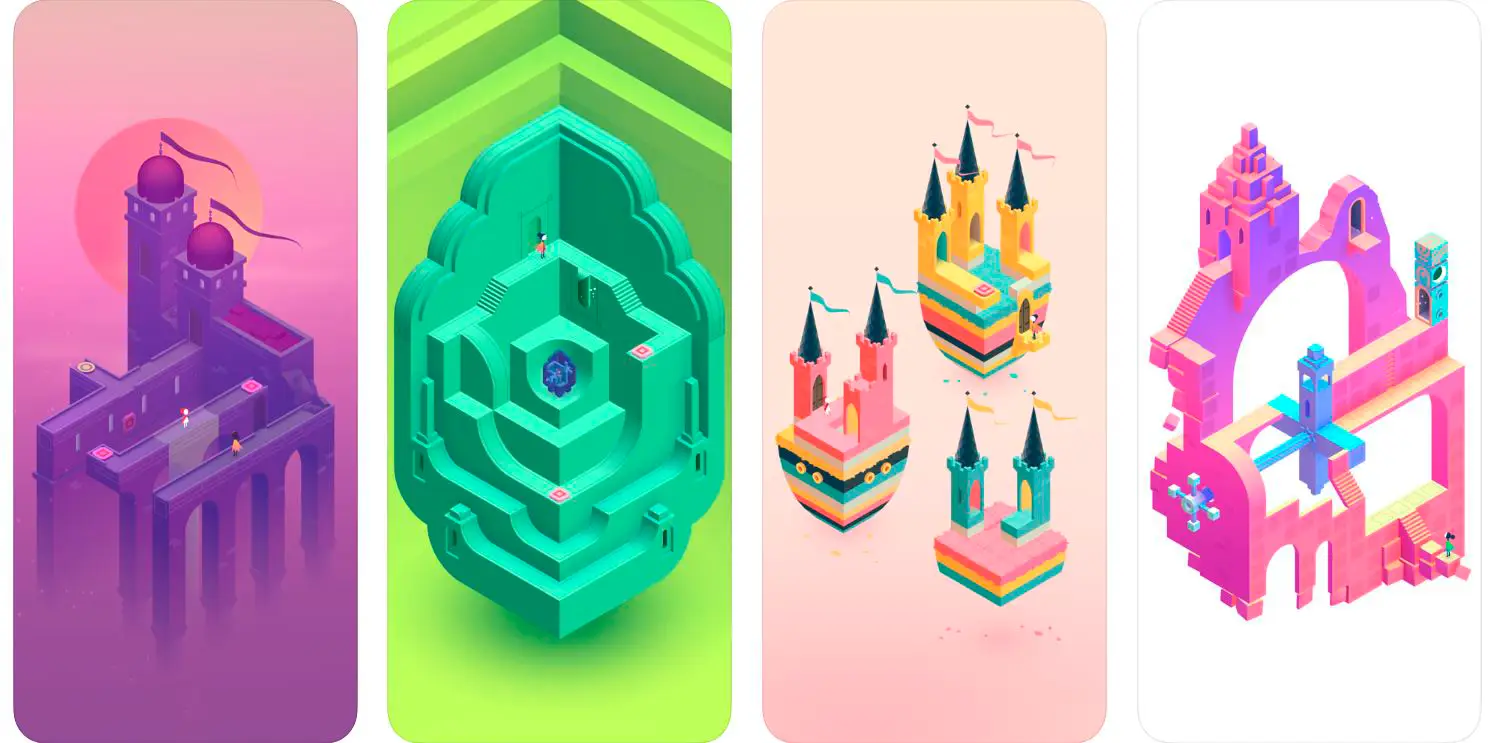Tunic is an indie game that captivates at first glance with its style and atmosphere. At first glance, it may seem like a cute adventure about a fox, but behind the bright wrapper there are complex puzzles that require a thoughtful approach. The video game offers a unique combination of charming visual style, classic action gameplay and mechanics that will appeal to fans of adventure concepts. Let’s analyze the main features of the game and answer the question: is Tunic worth playing?
Tunic gameplay: action, puzzles and exploration of the world
The gameplay of the project combines three key elements:

- Action: in battles, the player will have to show dexterity and strategic thinking, choosing the right moment to attack or defend.
- Puzzles: the concept is full of hidden mechanisms and secrets that are gradually revealed as you progress.
- Exploration: locations open up a lot of opportunities for the user, including the search for treasures and key artifacts to advance the plot.
Every detail of the world is thought out in such a way as to motivate the player to explore and find new secrets.
Riddles: the main challenge for players
Riddles in the game Tunic are not just a way to pass the time, but a real challenge. They require the player to think outside the box, be attentive and patient. Many puzzles are based on interaction with the surrounding world, where every detail can be part of the solution.
Players note that some tasks can be so difficult that solving them brings real satisfaction. This makes Tunic an ideal choice for those who like to solve mysteries and achieve success on their own.
Artifacts and treasures: rewards for efforts
 As the player progresses, he will find many artifacts and treasures that help advance the plot or improve the fox’s abilities.
As the player progresses, he will find many artifacts and treasures that help advance the plot or improve the fox’s abilities.
- Weapons and equipment: Swords, shields and other items for combat.
- Keys and maps: Help open new paths and better navigate.
- Special artifacts: Improve the hero’s characteristics or give access to unique opportunities.
These finds not only simplify the gameplay, but also add depth to the game, turning each exploration into an exciting adventure.
Tunic Walkthrough: What Beginners Need to Know
Tunic Walkthrough requires the player to not only be attentive, but also take a strategic approach. At the beginning of the game, the fox has nothing but his wits and desire to explore the world. Gradually, the player gains access to new abilities and tools that allow him to deal with enemies and open previously inaccessible areas.
The game does not provide direct clues, which enhances the feeling of independent discovery. To successfully complete Tunic, it is important to pay attention to details, look for hidden paths and not be afraid to try different approaches to solving problems. Beginners are advised to remain patient and explore every corner of the locations – this will help not to miss important elements for advancing the plot.
Graphics and Sound: How Tunic Creates a Unique Atmosphere
Tunic captivates with its graphics. The visual style of the game resembles a fairy-tale illustration with bright colors and detailed textures. Each region of the game world is unique, which makes the exploration process even more exciting.
The sound in the game perfectly complements the atmosphere. Calm melodies in safe zones are replaced by tense tracks during battles, creating the right mood for each moment. The musical accompaniment makes the journey emotionally rich and unforgettable.
Why should you play Tunic?
Tunic is not just a game, but a real adventure that makes you think and inspires. It is ideal for those who appreciate complex puzzles, deep gameplay and an atmospheric world. A unique approach to level design and puzzles makes the game memorable and different from other indie projects.
The complexity of some tasks may scare off beginners, but it will also be a pleasant challenge for fans of the genre. Tunic is exactly the kind of game that rewards diligence and attention, leaving only positive impressions.
Where to buy Tunic and what platforms is the game available on
For those who want to evaluate Tunic, the game is available on several popular platforms. It can be purchased in the digital stores Steam, Epic Games Store or Microsoft Store. Tunic is also available for PC, Xbox and PlayStation owners, which makes it convenient for a wide audience.
The choice of platform depends on the player’s preferences, but on PC the game offers excellent graphics quality and flexible control settings. Tunic also regularly participates in sales, which allows you to purchase it at a bargain price. It is important to note that the game is suitable for both experienced gamers and those who are just getting acquainted with the genre.
Download Tunic: what is important to know
You can download Tunic from official stores, which guarantees the safety and stability of the gaming process. After purchase, the game loads quickly and does not require large system resources, which makes it accessible even for owners of average-power computers.
Before installation, it is recommended to check the minimum and recommended system requirements. This will help to avoid performance issues and allow you to enjoy all the visual and gameplay features.

Bottom Line: Is Tunic Worth Playing?
 If you are looking for a game that combines addictive gameplay, charming visual style and intellectual challenges, then Tunic is the perfect choice. This game offers a unique experience that makes you think, learn new things and enjoy every moment.
If you are looking for a game that combines addictive gameplay, charming visual style and intellectual challenges, then Tunic is the perfect choice. This game offers a unique experience that makes you think, learn new things and enjoy every moment.
Tunic is not only a video game, but also a real adventure that will remain in your memory for a long time. If you want to try something unusual and exciting, definitely give it a chance. It is suitable for both those who love complex puzzles and those who appreciate atmospheric adventures.
 en
en  ru
ru  de
de  ar
ar  es
es  hi
hi  fr
fr  nl
nl  it
it  pt
pt  el
el 










